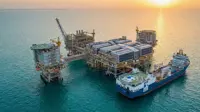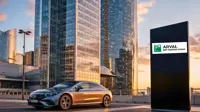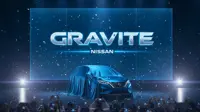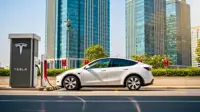Paul Allen's Stratolaunch, biggest plane ever built, rolls out
01 Jun 2017
A colossal aircraft capable of launching satellite-toting rockets into space is closer to testing, having been wheeled out of a hangar in California's Mojave Desert for the first time on Wednesday.
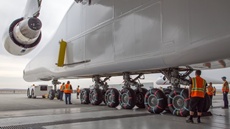 The project backed by Microsoft co-founder Paul Allen has been proceeding for about six years and was on track for its first launch demonstration as early as 2019, Stratolaunch Systems Corporation chief executive Jean Floyd said in a blog post.
The project backed by Microsoft co-founder Paul Allen has been proceeding for about six years and was on track for its first launch demonstration as early as 2019, Stratolaunch Systems Corporation chief executive Jean Floyd said in a blog post.
''This marks a historic step in our work to achieve Paul G Allen's vision of normalising access to low Earth orbit,'' Floyd said. The actual launch is scheduled for 2019.
Allen and his team have been quietly building in the giant plane in the desert for a couple of years now. It is touted as the largest aeroplane ever built, with a wingspan wider than Howard Hughes' Spruce Goose.
The comparison is inevitable given that the 'Goose' was a colossal failure – the turboprop aircraft never took off commercially and remained a museum piece, overtaken by the rapid development of jet engine technology.
''This is a first-of-its-kind aircraft, so we're going to be diligent throughout testing,'' Floyd said.
In the weeks and months ahead, Stratolaunch, as the plane is called, will be testing fuel systems, engines and more on the ground at its air and space port in the desert, according to Floyd.
Support structures were removed from the plane during the past few weeks, allowing it to rest on its 28 wheels for the first time.
The Stratolaunch aircraft weighs 226,796 kg and has a wingspan measuring 385 feet, according to the company. It is 238 feet from nose to end – larger than a football field - and it is 50 feet from the ground to the tip of its vertical tail.
But why is Allen, the co-founder of Microsoft and owner of the Seattle Seahawks, building such a massive plane? Not to carry passengers, of course, but rockets.
Allen's Stratolaunch company has partnered with Orbital ATK to "air launch" the company's Pegasus XL, a rocket capable of delivering small satellites, weighing around 500 kg, to orbit. The rockets would be tethered to the belly of the giant plane, which would fly them aloft, and once at an altitude of 35,000 feet or so, the rockets would drop and "air launch" to space.
When the ambitious venture was launched some six years ago by philanthropist Allen, partners in the project vowed it would revolutionise orbital travel in the post-space shuttle era.
Using huge passenger jet engines, it would tote a rocket and be able to launch payloads, satellites and someday humans into low-earth orbit, Allen said at the time.
"With airport-style operations and quick turn-around capabilities," the company said it believes "air launch" is a cheaper and more efficient way to get satellites into space than rockets that launch vertically and can be extraordinarily expensive.
Allen vowed that the project would result in greater flexibility than ground-based rocket launches and better cost effectiveness for cargo and human missions to space.
The future is LEO
It's really all about LEO, or low-earth orbit. Allen and others, such as Richard Branson's Virgin Orbit, are betting that they can reduce the cost of launching small satellites to space. And that, in turn, will lead to new ways to beam the internet all across the globe, provide better Earth sensing capabilities, better communication, and open up all sorts of avenues.
Private space travel is also among the big visions of tech industry star Elon Musk, founder of SpaceX as well as electric car company Tesla. SpaceX in fact will blast off its next delivery of food, supplies and science experiments to astronauts living at the International Space Station today.
The launch of SpaceX's 11th commercial resupply mission aboard an unmanned Dragon cargo ship is scheduled for 2155 GMT.
"When access to space is routine, innovation will accelerate in ways beyond what we can currently imagine," Allen said in a statement a year ago. "That's the thing about new platforms: when they become easily available, convenient and affordable, they attract and enable other visionaries and entrepreneurs to realise more new concepts."
More than a decade ago, Allen had hoped to spark a revolution in space travel when he funded SpaceShipOne, which became the first commercial vehicle to cross the threshold of space. The project ultimately won the Ansari X Prize, and a $10 million award. He then licensed the technology to Branson and moved on to other pursuits. But with Stratolaunch, he is back in the space business.
"Thirty years ago, the PC revolution put computing power into the hands of millions and unlocked incalculable human potential," he wrote. "Twenty years ago, the advent of the Web and the subsequent proliferation of smartphones combined to enable billions of people to surmount the traditional limitations of geography and commerce. Today, expanding access to LEO holds similar revolutionary potential."

